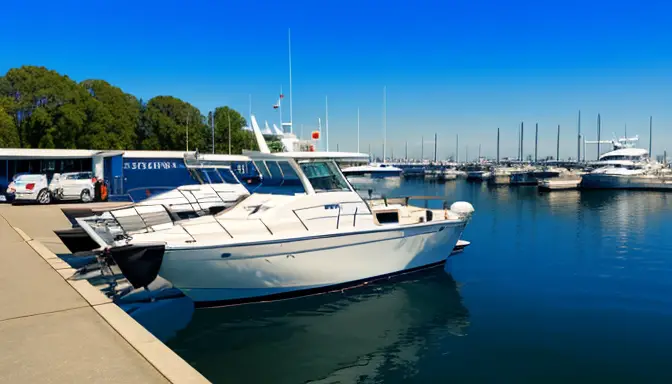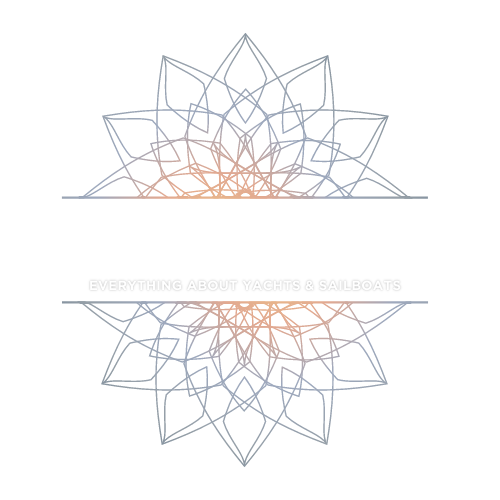When it comes to filling your boat with gas, safety should always be a top priority. Accidents and spills can quickly turn a fun day on the water into a disaster. By following the right steps, you can ensure a smooth and safe refueling process for all your boating adventures.
- Choose the Right Fuel Type: Selecting the appropriate fuel type recommended for your boat’s engine is crucial. This not only prevents damage but also ensures optimal performance on the water.
- Turn Off Engines and Extinguish Flames: Before refueling, make sure to switch off all engines and any sources of ignition on board to eliminate the risk of fire hazards.
- Use Proper Ventilation: Proper ventilation in the refueling area is essential to prevent the accumulation of gas fumes. This reduces the risk of inhaling harmful vapors.
- Secure the Boat During Refueling: It’s important to properly secure your boat to the dock or anchor to prevent any drifting during the refueling process. This helps avoid spills and accidents.
- Ground Yourself: Before handling the fuel pump, ground yourself by touching a metal part of the boat. This helps discharge any static electricity and reduces the risk of sparks.
- Avoid Overfilling the Tank: Using a fuel nozzle with an automatic shut-off feature can prevent overfilling the gas tank. This not only avoids spills but also protects the marine environment.
- Dispose of Waste Properly: Any spilled fuel or waste should be disposed of in designated areas at the marina. This practice helps protect the water and marine life from contamination. Always follow local regulations for safe disposal practices.
Choose the Right Fuel Type
When it comes to choosing the right fuel type for your boat, it’s crucial to follow the manufacturer’s recommendations to ensure smooth sailing on the water. Using the wrong fuel can not only damage your engine but also compromise your safety. Here are some key points to consider:
- Check the Owner’s Manual: Always refer to your boat’s owner’s manual to determine the correct fuel type for your specific engine model.
- Octane Rating: Make sure to use fuel with the recommended octane rating to prevent knocking and maintain engine performance.
- Avoid Ethanol: If possible, opt for ethanol-free fuel to prevent potential issues with engine components and fuel system.
- Consider Environment: Choose fuel that is environmentally friendly and complies with regulations to minimize pollution in water bodies.

Turn Off Engines and Extinguish Flames
Before you start refueling your boat, it is crucial to turn off all engines and extinguish any flames on board. This step is essential to eliminate the risk of fire hazards and ensure a safe refueling process. By switching off engines and extinguishing flames, you are protecting yourself and your boat from potential accidents and explosions.
Additionally, make sure to double-check that all sources of ignition are completely turned off. This simple yet important precaution can prevent dangerous situations and safeguard both you and your boat during the refueling process.
Use Proper Ventilation
When refueling your boat, one crucial step to ensure safety is to . Proper ventilation helps to prevent the accumulation of gas fumes in the refueling area, reducing the risk of inhaling harmful vapors. This simple yet essential measure can significantly enhance the safety of the refueling process.
Here are some key points to consider for proper ventilation:
- Ensure there is adequate airflow in the refueling area to disperse any gas fumes.
- Open hatches or windows to allow fresh air to circulate during the refueling process.
- Avoid refueling in enclosed spaces to prevent the build-up of potentially dangerous gas vapors.
By following these ventilation guidelines, you can minimize the risks associated with gas fumes and create a safer environment for refueling your boat.

Secure the Boat During Refueling
When it comes to refueling your boat, ensuring that it is securely anchored or docked is crucial to prevent any mishaps. Imagine your boat as a majestic swan gracefully gliding on the water – you wouldn’t want it to suddenly veer off course due to a lack of proper securing, would you?
Here are some essential steps to secure your boat during refueling:
- Use sturdy dock lines to tie your boat securely to the dock or anchor.
- Double-check the knots to ensure they are tight and reliable.
- Consider using fenders to protect your boat from any potential bumps or scrapes during the refueling process.
By taking these precautions, you can enjoy a stress-free refueling experience and focus on gearing up for your next boating adventure!
Ground Yourself
When it comes to refueling your boat safely, grounding yourself is a crucial step in preventing any potential accidents. By touching a metal part of the boat before handling the fuel pump, you can discharge any static electricity that may have built up. This simple action significantly reduces the risk of sparks, which could lead to a dangerous situation. Think of it as a safety measure similar to wearing a seatbelt while driving – it’s a small action that can make a big difference in ensuring your safety and the safety of those around you.

Avoid Overfilling the Tank
When it comes to refueling your boat, one crucial step to remember is to avoid overfilling the tank. This not only prevents spills but also protects the marine environment from potential contamination. To achieve this, it is essential to use a fuel nozzle with an automatic shut-off feature. This handy tool will stop the flow of gas once the tank is full, eliminating the risk of overfilling and spills. By investing in a quality fuel nozzle, you can ensure a smooth and environmentally friendly refueling process for your boat.
Dispose of Waste Properly
When it comes to disposing of waste properly after refueling your boat, it is crucial to follow the correct procedures to protect the environment and marine life. Here are some essential steps to ensure you handle waste responsibly:
- Collect any spilled fuel or waste using absorbent materials to prevent it from entering the water.
- Use designated waste disposal areas at the marina to dispose of any fuel or waste safely.
- Follow local regulations and guidelines for the proper disposal of hazardous materials to avoid harming the environment.
- Never dump fuel or waste directly into the water, as it can have harmful effects on marine ecosystems.
By taking these precautions and following the correct waste disposal practices, you can contribute to keeping our waterways clean and safe for everyone to enjoy.
Frequently Asked Questions
- What fuel type should I use for my boat?
It is crucial to select the appropriate fuel type recommended for your boat’s engine to ensure optimal performance and prevent damage while out on the water.
- Why is it important to turn off engines and extinguish flames before refueling?
Switching off all engines and sources of ignition on board your boat is essential to eliminate the risk of fire hazards during the refueling process, ensuring safety for you and your vessel.
- How can I prevent overfilling the gas tank?
Prevent overfilling by using a fuel nozzle with an automatic shut-off feature to avoid spills, protect the marine environment, and ensure a smooth refueling experience.
- What should I do with spilled fuel or waste?
Dispose of any spilled fuel or waste in designated areas at the marina to protect the water and marine life from contamination. Always follow local regulations for safe disposal practices to safeguard the environment.
- What Happened to Bluewater Yachts? The Inside Story - May 31, 2024
- Upgrade Your Boat’s Water Pump to the Mach 5 - May 30, 2024
- Upgrade Your Boat with the Big Stuff Stuffing Box - May 30, 2024


